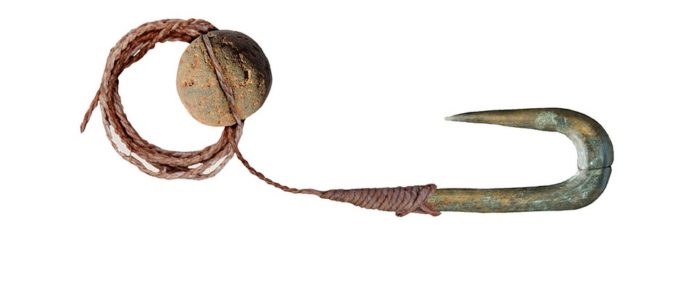Ancient humans in the Middle East used sophisticated fishing tools at least 12,000 years ago, a study has found.
Ancient fishing is hard to study, since many of the materials used, such as plant fibres and wood, were perishable. However, one of the largest ever collections of early fishing technology allowed the researchers an insight into the techniques that were used.
The team, led by Antonella Pedergnana of the Römisch-Germanisches Zentralmuseum Archaeological research institute in Germany, studied 19 bone fish hooks and six grooved stones from the Jordan River Dureijat (JRD) in Hula Valley, northern Israel. They believe that the grooved stones were used as weights.
“The hooks are amazingly similar to modern hooks – in size, in features (like barbs) and in dexterity of making,” said Prof Gonen Sharon of Tel Hai College, Israel. “Moreover, the hooks present features that are rarely found in modern day hooks – for example, an outer lower barb aiming to function as a ‘point of no return’ to prevent the fish from escaping the hook.”
These sophisticated methods arose during a seismic shift in human history: the change from nomadic to agricultural lifestyles. The people who used these fishing tools were an in-between stage. They were hunter-gatherers, but they lived in one place, in stone houses. As a result, they relied heavily on fish. While other resources could be exhausted, fish replenished much more easily and were available year-round.
There was a huge variety in the hooks, showing that they understood that different tools were needed for different fish. “Looking at the hooks, we see that there are no two similar ones. Each hook is different in size, in features and in style,” said Sharon. “This variability can be explained by the excellent knowledge these people had regarding fish behaviour.
“They knew exactly what size of hook is good for what size and type of fish, and what features are needed for get the best results for each fish type.
“We also know, from the fish bones found at the site, that the size of fish caught ranges between very small fish to giant carp over 2m in length.”
Though the tools were similar to modern hooks in many ways, there were some differences, too. “The JRD fishers didn’t drill holes in the hooks (possibly because the bones are not strong enough) but instead used sophisticated and diverse methods of attaching the line to the hook and weights hooks, like grooves, bulges and sophisticated knots, and even the use of glue.”
Some of the grooves and plant fibre residues on the bends of the hooks suggest that the fishers were using artificial lures.
“The use of fly fishing indicates a full and deep knowledge of fish behaviour,” said Sharon. “You need to know that some fish species hunt by attacking insects near the water surface and will attack an artificial bite that pretends to be a fly. So, by 13,000 years ago they knew all there was to know about fish of the Hula Lake.”
Read more about archaeology:
Credit: Source link






























